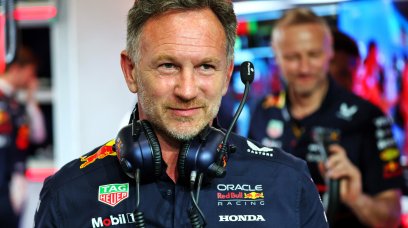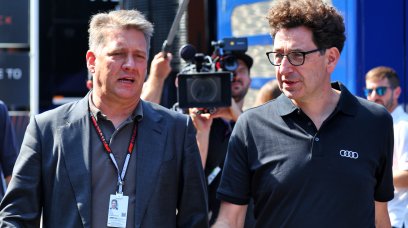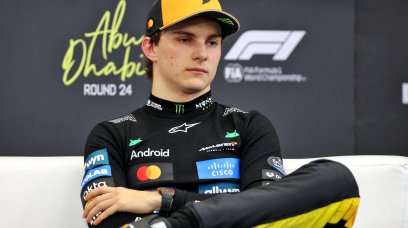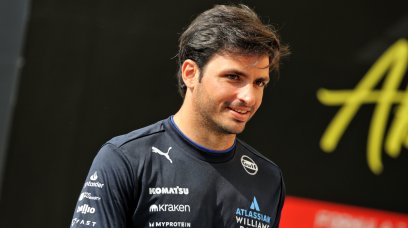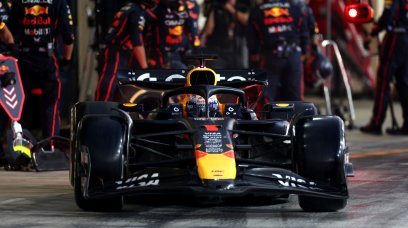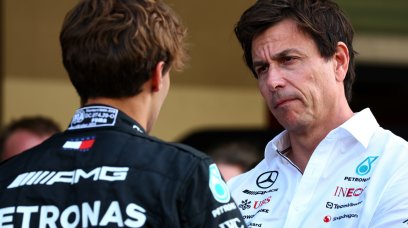There will be, of course, accusations of ‘clickbait’ about the headline, but please bear with me: This analysis has been a while in the making and was researched with the assistance of numerous people, some of whom are in the Ferrari loop and have simultaneously observed the decline of Williams at close quarters. The analysis has been based on the Four M’s of Management: Manpower (human resource), Machinery (infrastructure), Money (income and budgets) and Market (environment) as they pertain to F1. However, before discussing parallels between two legendary teams, let us examine the survival rate of teams during Formula 1’s 70-year history: During this timeframe over 130 base outfits – not teams given numerous entities raced under various names, such as Tyrrell, which became BAR, then Honda, then Brawn and finally Mercedes F1 – contested the championship. Of these just 10 remain, with only Ferrari, McLaren, Tyrrell and Williams able to trace their histories back 60+ years; AlphaTauri harks back to 1979 as Minardi, Alpine to 1982 (as Toleman, Benetton, Renault) Aston Martin (Jordan, Midland, Spyker, Force India), Alfa Romeo (Sauber, BMW) and Red Bull (Stewart, Jaguar) to the 90s, and Haas to 2016. With 7.7% of those 130 teams remaining, what is crucial is that teams such as Tyrrell, Williams, McLaren, Toleman and Stewart went through various changes of ownership to live. Clearly then teams don’t have a divine right to exist, as the demises of hallowed names such as Maserati, Vanwall, Cooper, Brabham and Lotus - championship winners all - prove.
How Williams ended up here
Williams experienced ups and downs mainly linked to the availability of ‘works’ engine suppliers, but the real turning point came in 2011 when proprietors Frank Williams and Patrick Head raised funding for personal reasons by listing the company on the Frankfurt Stock Exchange rather than taking in investors. They appointed a financial manager (Adam Parr) who had no understanding of F1 to drive the IPO. At that stage 14 years had elapsed since the last Williams title (1997), and there had been championship challenges with BMW and a fortuitous 2012 win in Spain via Pastor Maldonado, but in real terms Williams was doomed once the holding company placed profits ahead of pace, particularly as Williams was required to justify major borrowings to shareholders. The word is that investments in composites, fabrications and aerodynamics suffered massively after the IPO - Williams persisted with aluminium gearbox casings long after all others switched to composite housings - and it showed. As results tailed off so sponsorship and prize income dropped, setting in motion a vicious downward spiral. As part of the IPO Williams founded an Advanced Engineering division, but this clearly caused management to take their eyes off the F1 ball and WAE was sold in two tranches to fund the team, but it proved too little, too late. Indeed, new owner Dorilton is said to have invested $200m since acquiring Williams F1 in 2020 (nine years after IPO) and even that is insufficient as recent results prove. Parr was gone by 2013, replaced by a succession of managers hamstrung by reduced financial agility. Within years Williams was a shadow of the archetypical independent F1 race team - accent on the r-word - it had been under (Sir) Frank and Patrick, both of whom had received royal recognition for their endeavours. The Williams IPO process should serve as a lesson to the sport how not to operate.
The eerie similarities with Ferrari
So, to Ferrari: It is 14 full seasons since the Scuderia won a title (2008) and while there have been bright points along the way, is it coincidence that there has been a discernible tailing off in results since Ferrari listed nine years ago? The New York Stock Exchange IPO was driven by financial manager Sergio Marchionne, who had no inherent understanding of F1 and saw Ferrari as just another (luxury) brand. Simultaneously Ferrari branched into the supplier business by agreeing to supply the nascent Haas F1 team with permitted components, services and technologies from 2016, and while the deal no doubt contributes healthily to the bottom line (NYSE ticker RACE), there was surely an element of management distraction. Ferrari deny this, but then they would… Where Ferrari once afforded the best in any of the Four Ms you wish to name, a combination of profit prioritisation, regulatory budget caps, drop offs in performance and increasingly bare red surfaces have combined to emasculate a once proud and dominant team which two decades ago - i.e. after the Williams 1992-97 glory years - dominated F1. To (too) many fans Ferrari is now just another team on the grid. When Ferrari slumped during the early 90s the solution was easy: Buy in the best of everything, whether top facilities and/or humans of any creed and pay what was required. French, British, South African, Japanese, German and Brazilian F1 superstars were recruited and paid exorbitant sums to persuade them to relocate to Maranello with families in tow or be (very well) compensated for spending extended periods alone in Italy. Image below (L-R), 2004: Ross Brawn (Technical Director, British), Luca Badoer (Test driver, Italian), Rubens Barrichello , Jean Todt (Team Manager, French), Luca di Montezemolo (President, Italian), Michael Schumacher, Rory Byrne (Chief Designer, South African), Paolo Martinelli (Head of engines, Italian) and Piero Ferrari.
This is no longer possible: Under strict budgetary restrictions Ferrari can no longer wave cheque books at suppliers, nor may the team develop and test 100 floors, then discard 98% of them. Equally, only the top three salaries are excluded from the budget cap – and it takes 1000 heads to win grands prix in this day and age. Thus, Ferrari finds it well-nigh impossible to attract top talent from afar - and it shows. Indeed, a source suggested that Dan Fallows, the ace aerodynamicist who last year moved from Red Bull to Aston Martin, declined an offer to relocate after Ferrari had been unable to up the ante adding that this was just one example. While there is nothing wrong with Italian (only) talent it means fishing in regional rather international waters. The net effect is that the vicious spiral has started and cannot be ebbed in the traditional manner of throwing money at the issues. Sponsors have exited - in January we estimated Ferrari had lost $50m in support - and while new announcements have been made these are low key. That the rear wing, usually prime real estate, states “FERRARI” and the base car colour is traditional scarlet rather than Marlboro Red tells its own tale.
Can Ferrari make it work?
Enzo Ferrari founded his eponymous company to build and sell road cars to fund his beloved Scuderia; today the F1 team acts as marketing halo for the road car division - which is going great guns - but the overriding irony is that profits do not flow the other way as and when required due to FIA regulations and dividend considerations. New wind tunnel? $50m - if permitted by the cap - and reduced dividends for five years… In short, to Ferrari stockholders it is all about short term dividends, not long-term track results. So what if the Scuderia does not perform: when that impacts the share price it is time to sell RACE stock and move to the next blue chip. Marchionne was gone within four years, cruelly taken by a brain tumour and replaced by Marlboro Man Louis Camilleri, who stood down for medical reasons, leaving Ferrari rudderless for almost a year during which time Executive Chairman John Elkann - scion of the Agnelli family who also has hands full with investments such as Stellantis and the scandal-hit Juventus football club - oversaw the company. Will Ferrari go the way of Williams? That depends on the paths pursued by Elkann and Camilleri’s successor Benedetto Vigna, who cleared out the top management and is said to have introduced strange management philosophies. His background is in silicon chips used in airbags and Nintendo wireless controllers and while these may aid Ferrari on its journey to electrification, they are surely not what F1 is all about… The bottom line is that it is too late to reverse the IPO, BUT there is time to spin off the Scuderia and place it under the autonomous control of a racing manager tasked solely with a return to glory of the Reds, not share price buoyancy. Even then, for reasons outlined, Ferrari will battle to attract the best talent and must instead hope the lure of Maranello is strong enough to lure sufficient quantities of ambitious engineers to Italy. If not, Ferrari risks going the way of Williams; worse, it could go the way of 92.3% of teams…
Most read

